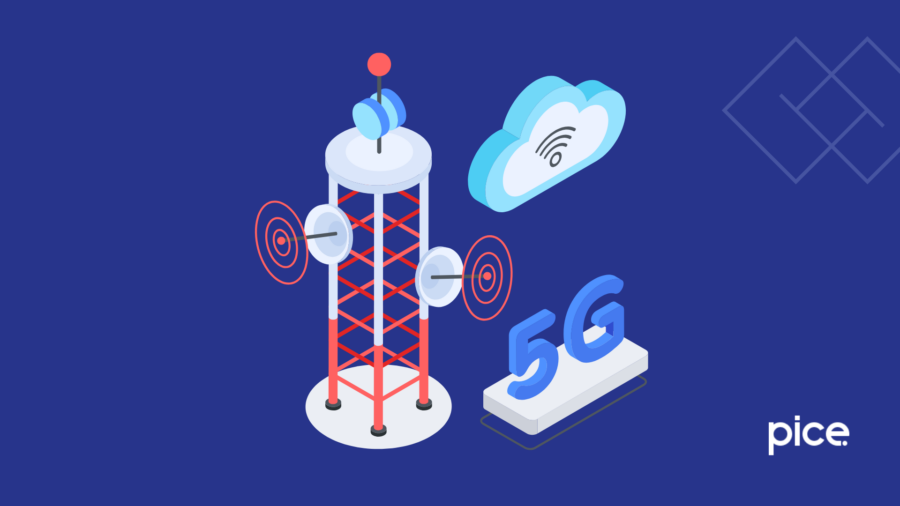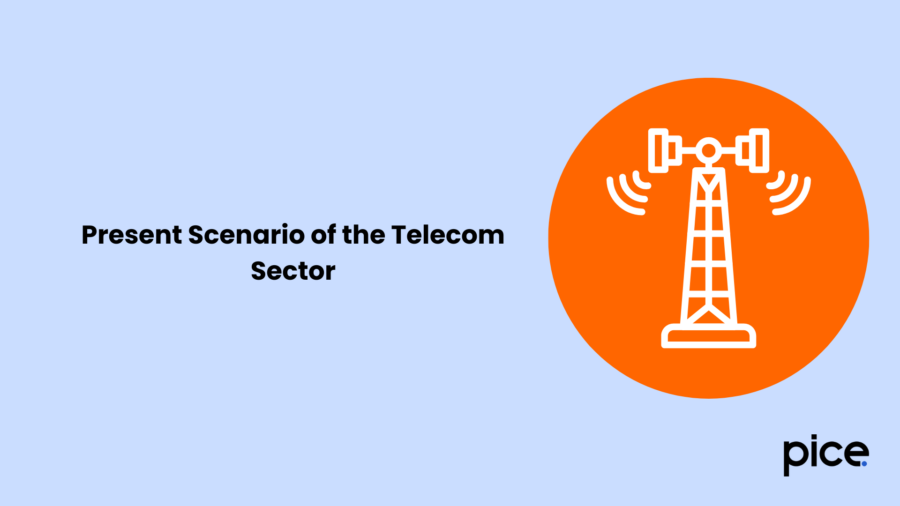Impact of GST on Telecom Sector in India
- 19 Jun 25
- 8 mins

Impact of GST on Telecom Sector in India
Key Takeaways
- GST increased telecom service tax from 15% to 18%, pushing operators to revise pricing policies.
- Telecom providers can now claim input tax credit on goods and services, improving cost efficiency.
- Frequent GST filings have raised compliance burdens for telecom companies, requiring more resources.
- The sector saw improved pricing transparency and reduced cascading taxes under the unified GST system.
- Despite added operational challenges, GST has contributed to lower telecom service costs for consumers.
Introduced in 2017, the Goods and Services Tax (GST) serves as a unified tax system for both inter-state and intra-state supply of goods and services in India. This shift has significantly influenced various industries, including India’s telecom sector.
Although GST has brought certain benefits, it has also added extra compliance responsibilities for telecom companies. Let’s explore how GST has impacted the telecom sector in India.
Present Scenario of the Telecom Sector

The Indian telecom sector has revolutionized after 1991 following the economic growth in the post-liberalisation era. This sector has further witnessed consolidated changes with the introduction of the telecom policy in 1999.
According to TRAI reports, there was a notable increase in mobile subscribers in October 2015 and broadband subscribers in October 2016. With the introduction of smartphones in India, mobile usage further gathered momentum, contributing to an increased number of mobile subscribers.
The renowned industry players, as a result of subscriber surge, have been offering beneficial prices and features to consumers. Competitive industry functions have thus helped consumers avail these services at promising prices.
In addition, technological intervention in the telecom industry has resulted in the introduction of rapidly advancing technologies. This has further led to the elimination of obsolete primitive technologies in the concerned sector.
Mobile advertising has been one of the reasons that facilitated an increase in mobile demand. Easy accessibility to the internet has been among other reasons to boost the number of mobile subscribers. However, the GST introduction initially, in 2017, resulted in additional compliance costs for telecom operators, despite increased demand for telecom services.
However, India’s telecom sector has yet sparked a true revolution in connecting people across the country. As per reports of January 2018, active mobile connections had crossed the remarkable milestone of 1 billion.
Currently, this sector is broadly classified into three key segments: telecom service providers, infrastructure providers (also known as tower companies) and equipment manufacturers.
Impact of GST on Telecom Industry
Prior to the GST introduction, the applicable tax rate on telecom services was 15%. However, with GST implementation, the government proposed to impose a GST rate of 18% on the concerned services. With an increase in the tax rate by 3%, telecom companies exhibited a changed pricing policy to recover the cost.
Further, in earlier tax regimes, in the pre-GST era, telecom companies were ineligible to claim credit of VAT (Value Added Tax) that they paid on goods. Moreover, these companies were ineligible to claim special additional duty (SAD) that they paid on imports of goods and equipment.
GST introduction, however, helped the telecom service providers avail credit of IGST (Integrated Goods and Services Tax) on imported goods as well as domestically supplied goods.
Is GST Going to Benefit the Telecom Sector?

GST implementation resulted in significant benefits for telecom service providers. One of the major benefits included the differences in roaming charges across state-wise circles. In addition, the other benefit includes the IT and billing system redesign for GST compliance and transparency.
In the telecom sector, TRAI is the regulatory entity and the Department of Telecommunications (DoT) is the licensed distributor (circle wise). Prior to the GST introduction, license distribution did not adhere to state-wise divisions or geographical boundaries.
For instance, the Delhi NCR circle included Ghaziabad, Noida, Gurgaon and Faridabad telephone exchanges, in addition to Delhi. However, in the post-GST era, license distribution follows state boundaries. As a result, the roaming charges apply when telecom consumers change the state border.
India is segmented into 22 telecom service areas or circles for licensing purposes. With further implementation of GST, the tax will be applicable across 29 states and 7 Union Territories (UTs). This revamp of the IT and billing systems of telecom companies will help meet GST compliance.
GST As a Game Changer
The GST system allows the telecom service providers to claim input tax credit (ITC) on the GST paid on purchases. These companies can use ITC claims to offset the outward tax liability. However, with a significant revenue decrease in the sector and the inability to pass tax liabilities on consumers, the telecom service providers had to offer competitive prices.
Further, this sector is significantly dependent on diesel. As diesel is beyond the purview of GST, it has been the government’s inability to help the sector utilise tax credits for smooth cash flow. If petroleum products remain excluded from GST, it could raise the overall tax burden and add extra financial burden on telecom companies.
Notably, telecom service providers have to file GST returns twice or thrice a month, unlike the pre-GST tax regime where they had to file annual returns. This has increased the compliance burden on such service providers who have to file returns transaction-wise for expenditure as well as income. It is not only time-consuming but also resource-intensive, leading to operational challenges.
Nevertheless, GST implementation has been significant in reducing the prices of telecom services. With the previous tax regime, the Indian indirect taxation system witnessed a cascading effect of tax. This resulted in double taxation and end-users paying higher taxes for availed services.
However, the unified taxation system under the GST regime has effectively reduced the cascading effect. As a result, prices of telecom services have significantly decreased. Moreover, it is anticipated to curb tax evasion while increasing input credit.
Conclusion
The impact of GST on the telecom sector includes both pros and cons. One of the pros includes the eligibility of telecom service providers to claim input tax credit on inward supplies to offset tax liabilities on sales. On the flip side, telecom companies experience additional compliance burdens as they have to file frequent GST returns, transaction-wise.
However, for the consumers, the unified taxation system has reduced the prices of telecom services, increasing the demand for such services in the country.
💡If you want to streamline your invoices and make payments via credit or debit card or UPI, consider using the PICE App. Explore the PICE App today and take your business to new heights.



















